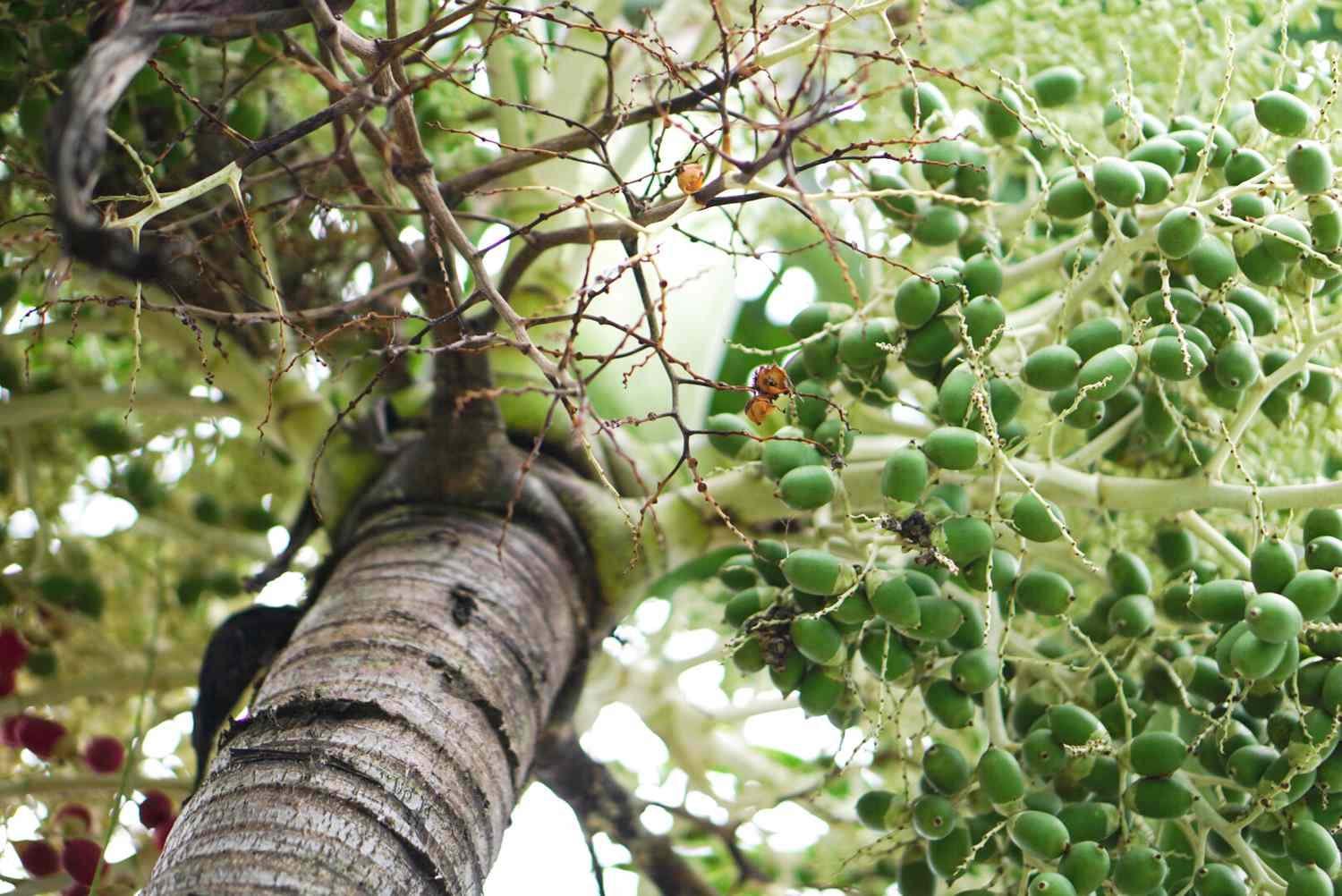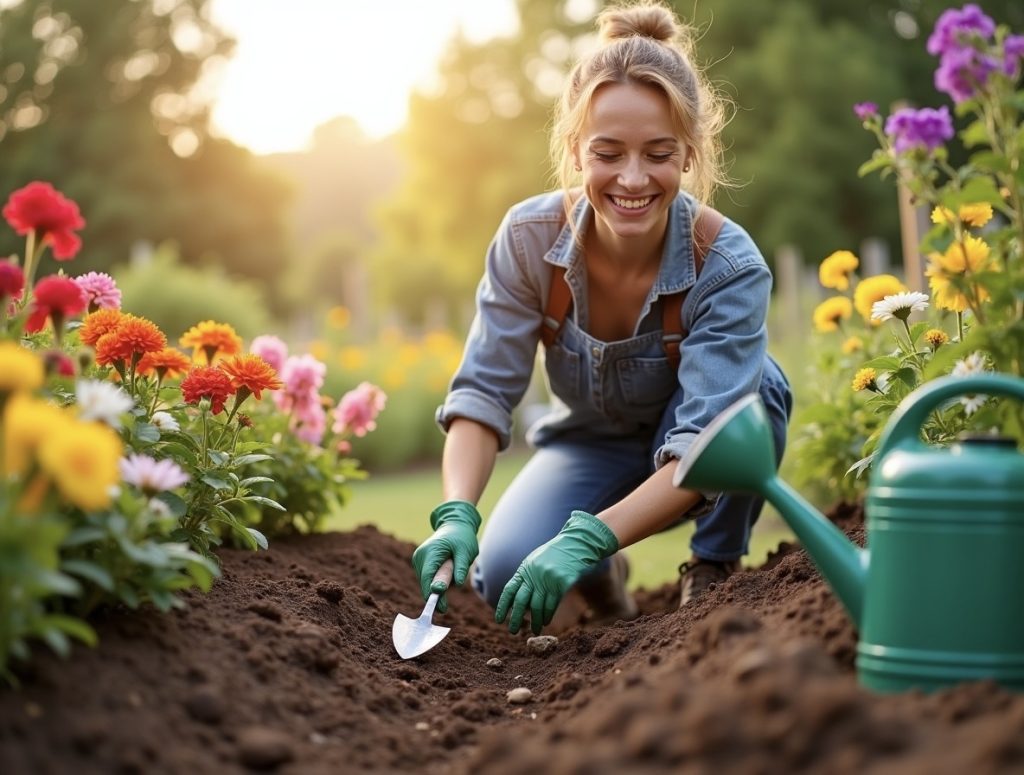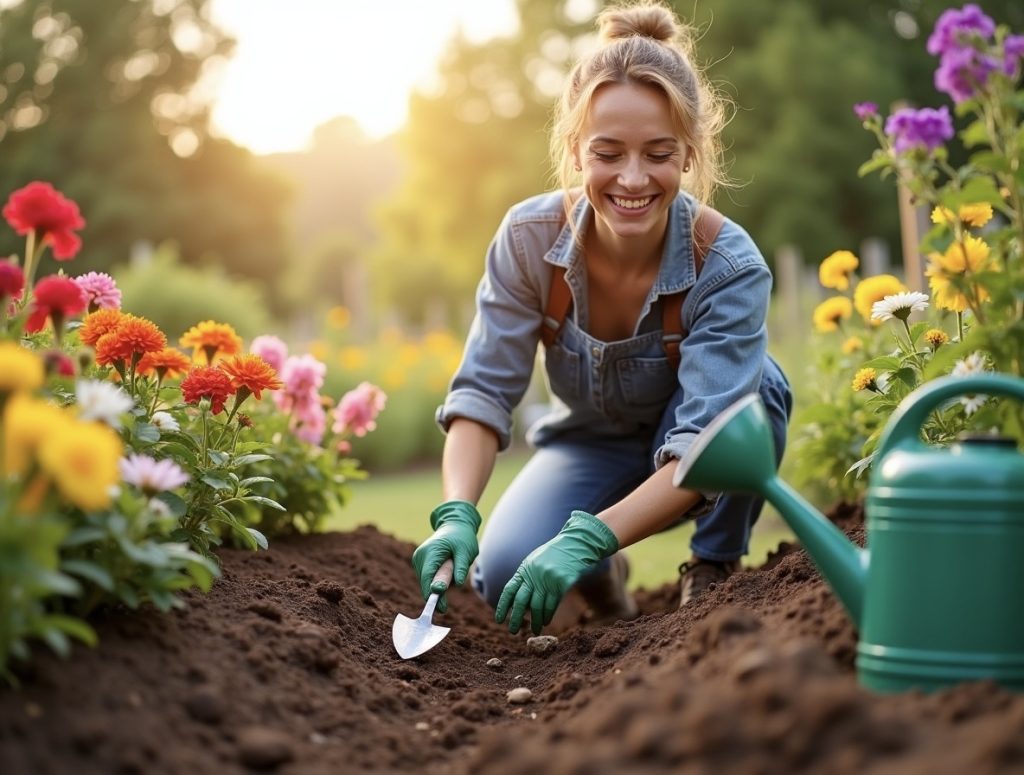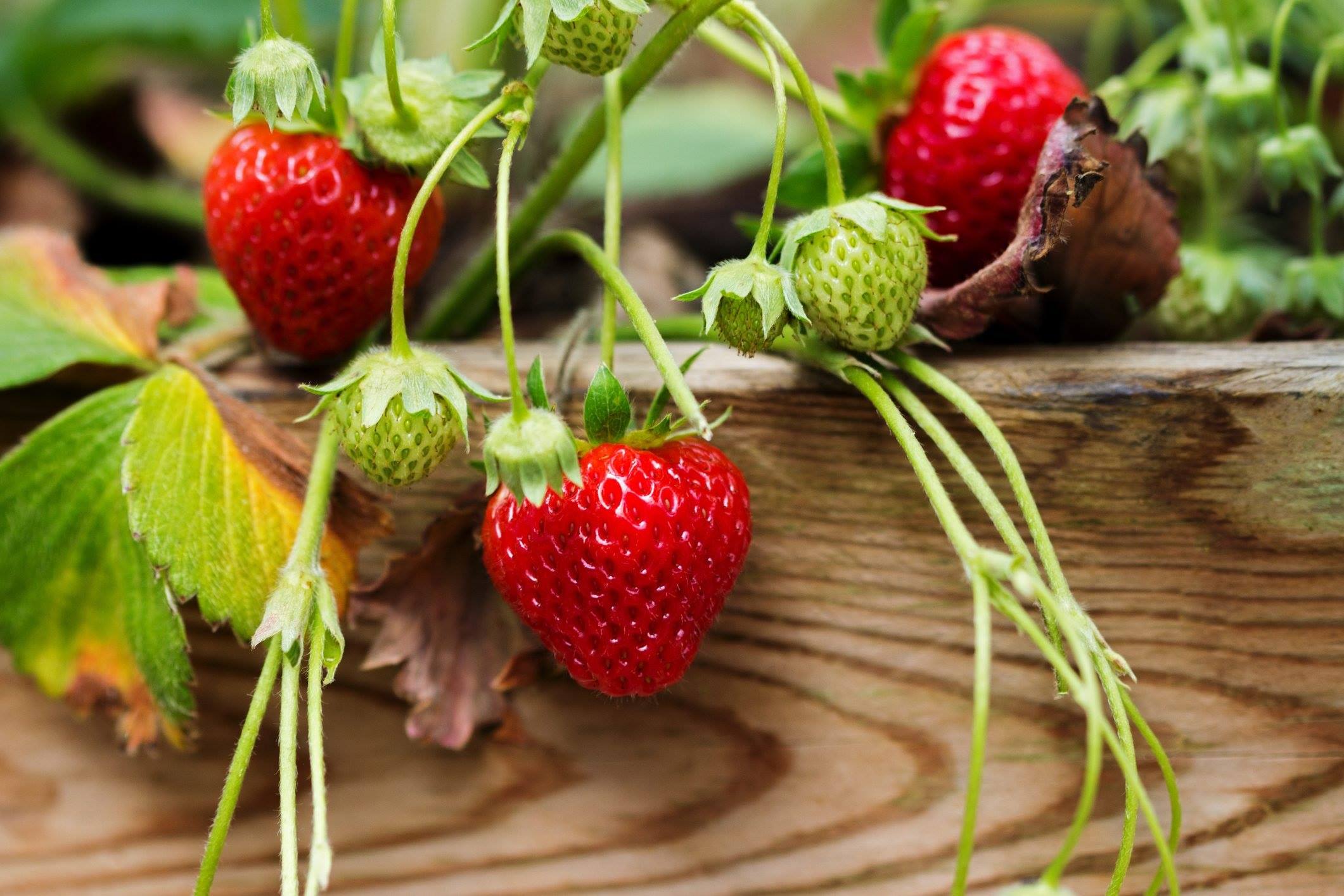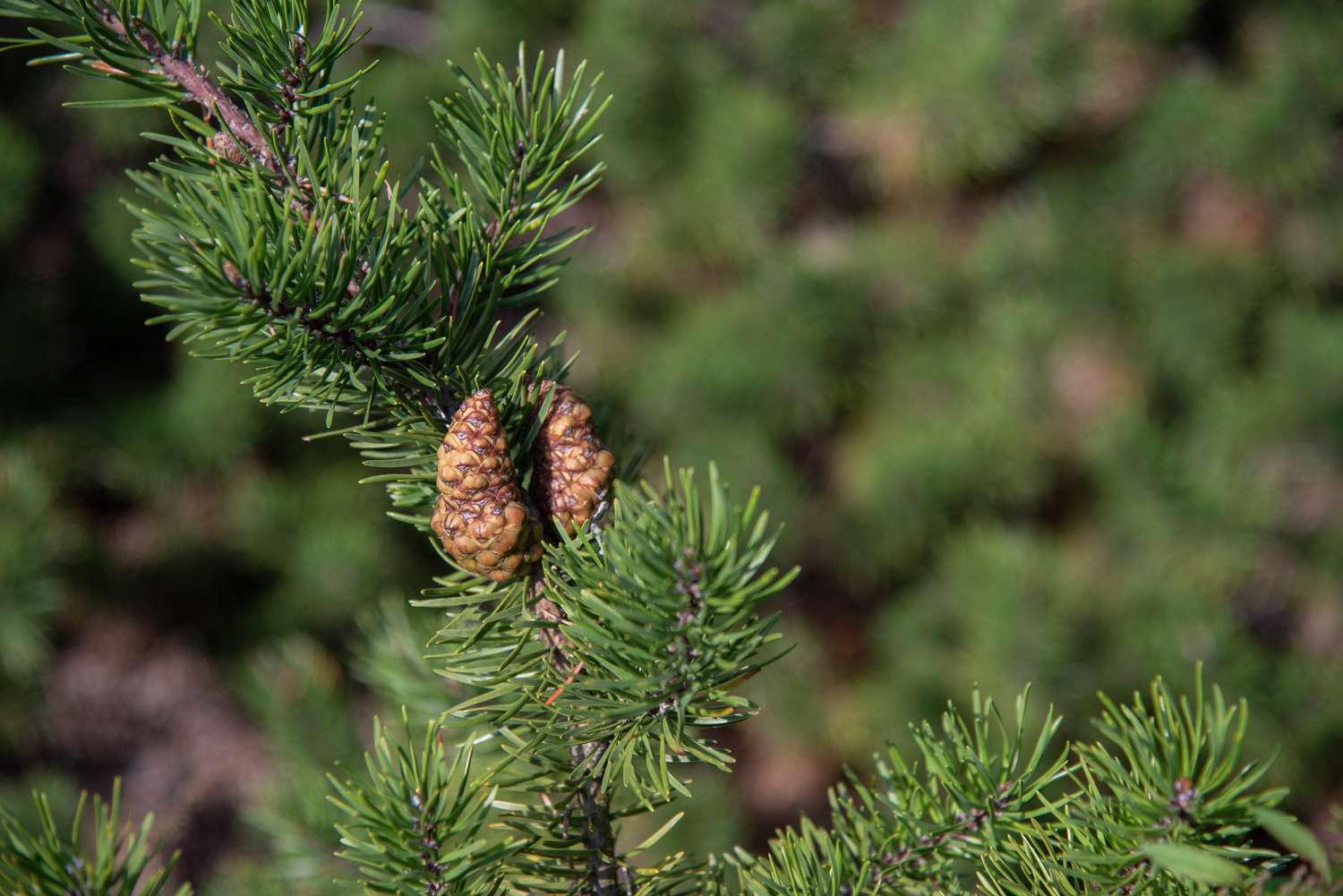Home>Gardening Techniques>How To Grow Hemp From Seed In Greenhouse
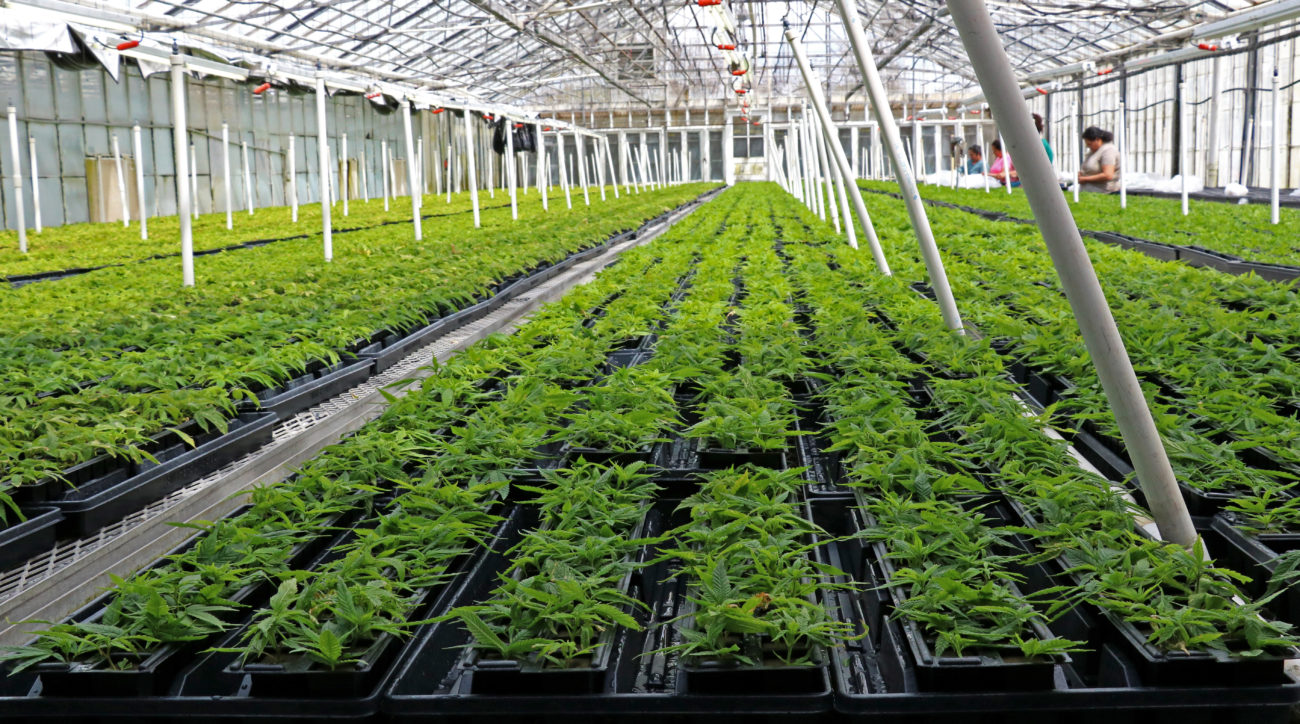

Gardening Techniques
How To Grow Hemp From Seed In Greenhouse
Modified: February 9, 2024
Learn how to grow hemp from seed in a greenhouse with our comprehensive guide. Discover essential plant care tips and techniques for successful cultivation.
(Many of the links in this article redirect to a specific reviewed product. Your purchase of these products through affiliate links helps to generate commission for Chicagolandgardening.com, at no extra cost. Learn more)
Table of Contents
- Introduction
- Benefits of Growing Hemp in a Greenhouse
- Selecting and Preparing Hemp Seeds
- Setting Up the Greenhouse for Hemp Cultivation
- Germinating Hemp Seeds
- Transplanting Hemp Seedlings
- Proper Lighting and Temperature for Hemp Growth in a Greenhouse
- Watering and Nutrient Requirements for Hemp Plants
- Pest and Disease Management in Hemp Greenhouse Cultivation
- Harvesting Hemp and Post-Harvest Handling
- Conclusion
Introduction
Welcome to the world of greenhouse hemp cultivation! Growing hemp in a controlled environment like a greenhouse offers numerous advantages over traditional outdoor cultivation. With the increasing interest in hemp and its versatile applications, many growers are turning to greenhouse cultivation to maximize their yields and protect their crops from external factors.
Hemp, scientifically known as Cannabis sativa, is a versatile plant that has been cultivated for centuries. It is primarily known for its association with marijuana, but industrial hemp contains extremely low levels of the psychoactive compound THC (tetrahydrocannabinol) and is legally grown for its fibers, seeds, and CBD (cannabidiol) extracts.
Growing hemp in a greenhouse provides a controlled and optimized environment for the plants to thrive. The greenhouse acts as a protective barrier against unpredictable weather conditions, pests, and diseases, allowing growers to extend the growing season and achieve higher quality and more consistent yields.
In this comprehensive guide, we will delve into the world of greenhouse hemp cultivation, exploring the benefits, step-by-step processes, and essential considerations for successful hemp growth. Whether you are an experienced hemp grower or new to the industry, this guide will equip you with the knowledge to excel in greenhouse hemp cultivation.
From selecting and preparing hemp seeds to optimizing lighting, temperature, and nutrient requirements, we will cover all aspects of greenhouse hemp cultivation. Furthermore, we will discuss pest and disease management, harvesting techniques, and post-harvest handling to ensure a successful and rewarding hemp cultivation journey.
So, roll up your sleeves, put on your gardening gloves, and let’s embark on this exciting journey of growing hemp from seed in a greenhouse!
Benefits of Growing Hemp in a Greenhouse
Growing hemp in a greenhouse offers a wide range of benefits for both commercial growers and hobbyists. Let’s explore some of the key advantages:
- Extended Growing Season: By cultivating hemp in a greenhouse, you can extend the growing season beyond the limitations of outdoor cultivation. This means you can start your crops earlier in the spring and continue growing them later into the fall, maximizing your yields and profits.
- Protection from External Factors: Greenhouses provide a shield against adverse weather conditions such as heavy rains, strong winds, or extreme temperatures. This protection ensures that your hemp plants remain healthy and undamaged, leading to better quality crops.
- Controlled Environment: With a greenhouse, you have full control over the growing conditions such as temperature, humidity, and lighting. This enables you to create an ideal environment for hemp cultivation, promoting healthy growth and enhancing overall plant development.
- Reduced Pest and Disease Pressure: The enclosed space of a greenhouse acts as a physical barrier against pests such as insects, birds, and rodents. This reduces the risk of infestations and helps maintain the health of your hemp plants. Additionally, the controlled environment minimizes the spread of diseases, providing a safer cultivation environment.
- Optimized Resource Utilization: Greenhouses allow for efficient resource utilization. By controlling water, nutrient, and energy inputs, you can optimize their usage, reducing waste and environmental impact. This can result in cost savings and a more sustainable cultivation practice.
- Improved Crop Quality and Consistency: The controlled environment of a greenhouse helps maintain consistent conditions for your hemp plants. This results in more uniform growth, improved cannabinoid profiles, and higher quality yields. Consistency in crop quality can be crucial, especially for commercial growers looking to meet specific market demands.
With the numerous benefits it offers, it’s no wonder that greenhouse cultivation is becoming increasingly popular among hemp growers. Whether you are a small-scale hobbyist or a large-scale commercial producer, utilizing a greenhouse can greatly enhance your hemp cultivation experience and increase your chances of success.
Selecting and Preparing Hemp Seeds
The first step in successful greenhouse hemp cultivation is selecting the right seeds and properly preparing them for germination. Here are some key factors to consider:
- Variety: The variety of hemp seeds you choose will depend on the intended purpose of your cultivation. Whether you are growing hemp for fiber, seeds, or CBD extraction, make sure to select varieties that are suitable for your desired end use. Consider factors such as cannabinoid content, growth characteristics, and regional adaptability.
- Genetics and Quality: It’s essential to source seeds from reputable and reliable suppliers to ensure genetic purity and high-quality seeds. Look for suppliers with a track record of producing stable and genetically consistent seeds. This will maximize the potential for healthy and productive hemp plants.
- Germination Rate: Choose seeds with a high germination rate to increase the chances of successful sprouting. Look for seeds with a germination rate of 80% or higher to ensure a robust start to your hemp cultivation journey.
- Germination Method: There are several methods you can use to germinate hemp seeds, including paper towel germination, direct sowing, or using seedling trays. Choose a method that aligns with your preferences, resources, and growing conditions. Each method has its own advantages and considerations, so make sure to research and choose the one that best suits your needs.
- Seed Treatment: Some growers prefer to treat their seeds before sowing to enhance germination rates and protect against pests and diseases. Seed treatment methods may include scarification, pre-soaking, or using beneficial microbial inoculants. However, it’s important to follow recommended guidelines and ensure the treatments are safe and appropriate for hemp cultivation.
Before planting, it’s crucial to prepare your greenhouse for optimal growing conditions. Clean the greenhouse thoroughly, removing any debris, weeds, or remnants from previous crops. Ensure proper ventilation, irrigation systems, and lighting setup to create an environment conducive to healthy hemp growth.
By carefully selecting high-quality seeds and properly preparing them for germination, you set the foundation for a successful hemp cultivation journey in your greenhouse. Remember to follow local regulations and guidelines regarding hemp cultivation and seed sourcing to ensure compliance and maximize your chances of success.
Setting Up the Greenhouse for Hemp Cultivation
Creating the optimal environment within your greenhouse is crucial for successful hemp cultivation. Here are some key steps to set up your greenhouse for hemp:
- Location and Orientation: Choose a location that receives ample sunlight throughout the day and is shielded from strong winds. Orient the greenhouse in a way that maximizes exposure to sunlight, ensuring even distribution of light to all plants. This will promote healthy growth and development.
- Greenhouse Structure: Select a greenhouse structure that suits your needs and budget. Consider factors such as size, materials, and ventilation options. Depending on your climate, you may need to choose a greenhouse with features like adjustable vents, shade cloths, or fans to regulate temperature and airflow.
- Irrigation System: Install an efficient irrigation system to ensure consistent and adequate water supply to your hemp plants. This can include drip irrigation, overhead sprinklers, or a combination of both. Monitor soil moisture levels regularly to prevent overwatering or underwatering.
- Lighting: Hemp plants require a minimum of 12-14 hours of light per day for optimal growth. If natural sunlight is not sufficient or available year-round, consider supplementing it with artificial lighting. LED grow lights are energy-efficient and can provide the specific light spectrum that hemp plants need for photosynthesis and development.
- Air Circulation and Ventilation: Proper airflow and ventilation are essential to prevent the buildup of excess humidity and reduce the risk of fungal diseases. Install ventilation systems, such as fans and vents, to create a continuous flow of fresh air. Monitor temperature and humidity levels regularly to maintain optimal conditions.
- Climate Control: Use environmental control systems to maintain the desired temperature and humidity levels in your greenhouse. This can include heaters, evaporative coolers, and dehumidifiers. Monitor and adjust these systems regularly to ensure a stable and comfortable environment for your hemp plants.
- Shading and Light Control: Implement shading techniques to protect hemp plants from excessive heat and direct sunlight during the hottest parts of the day. This can be achieved using shade cloths, blinds, or movable shade structures. Additionally, monitor the light intensity inside the greenhouse and adjust artificial lighting if needed.
- Pest and Disease Management: Set up preventive measures to minimize the risk of pest infestations and diseases. Implement integrated pest management strategies such as regular scouting, beneficial insects, and organic pest control methods. Proper sanitation practices and strict hygiene protocols are also necessary to prevent the spread of diseases within the greenhouse.
- Record-keeping and Monitoring: Maintain accurate records of your greenhouse activities, including planting dates, fertilization schedules, pest and disease observations, and crop yields. Regularly monitor plant health and growth to detect any issues early and take appropriate actions.
By carefully setting up your greenhouse to provide the ideal growing conditions for hemp, you are laying the foundation for successful cultivation. Remember to continually monitor and make adjustments as needed to ensure optimal growth and maximize your hemp yield.
Germinating Hemp Seeds
Germination is a crucial stage in the life cycle of hemp plants. Proper germination ensures healthy seedlings that will eventually grow into robust hemp plants. Here’s a step-by-step guide on germinating hemp seeds:
- Seed Selection: Choose high-quality hemp seeds from a reputable supplier. Look for seeds with a high germination rate and good genetic characteristics to optimize your chances of successful germination.
- Preparation: Before germinating the seeds, you can pre-soak them in warm water for 24-48 hours to help soften the seed coat and speed up germination. However, be cautious not to soak the seeds for too long, as excessive moisture can lead to rotting.
- Germination Method: There are several methods you can use to germinate hemp seeds, including the paper towel method, direct sowing, or using seedling trays. Let’s explore the paper towel method, which is a popular and effective approach:
- Moisten the Paper Towel: Take a paper towel and moisten it with clean, distilled water. It should be damp, but not dripping wet.
- Seed Placement: Place the hemp seeds evenly spaced on the moist paper towel.
- Folding: Fold the paper towel gently to cover the seeds and create a protective layer.
- Enclose in Plastic Bag: Place the folded paper towel with the seeds in a ziplock bag or a sealable container to create a moist and enclosed environment.
- Warmth and Darkness: Keep the plastic bag in a warm (around 70-85°F or 21-29°C) and dark location, like a dark cupboard or a germination tray with a heating mat.
- Check and Moisturize: Check the paper towel every day to ensure it remains moist. If it starts drying out, spray it lightly with water.
- Germination: After a few days, you should start to see the seeds sprouting with small radicles (root-like structures).
- Transplanting: Once the seeds have sprouted with a visible radicle, carefully transplant them into seedling trays or small pots filled with high-quality potting soil. Make sure to plant the seeds with the radicle facing downward and cover them with a thin layer of soil.
- Nurture Seedlings: Place the seedlings in a warm and well-lit area, ensuring they receive 12-14 hours of light per day. Maintain the temperature and humidity levels while ensuring adequate air circulation. Be gentle in watering the seedlings, keeping the soil evenly moist but not waterlogged.
- Thinning: As the seedlings grow, you may need to thin them out by removing weaker or overcrowded seedlings to allow the stronger ones to thrive and have enough space to develop.
By following these steps and providing the right conditions for germination, you can ensure a successful start to your hemp cultivation journey. Remember that patience and attentiveness during this stage are key, as germination can take anywhere from a few days to a couple of weeks, depending on the seed variety and environmental conditions.
Transplanting Hemp Seedlings
Once your hemp seedlings have sprouted and developed a strong root system, it’s time to transplant them into their permanent growing containers or beds. Transplanting allows the seedlings to establish deeper roots, access more nutrients, and continue their growth towards maturity. Here’s a step-by-step guide on transplanting hemp seedlings:
- Preparing the Planting Containers: Choose appropriate containers or beds for transplanting, such as pots, seedling trays, or raised beds. Make sure the containers have proper drainage holes to prevent waterlogging.
- Preparing the Soil: Use a well-draining soil mix with good fertility and organic matter content. Hemp prefers a slightly acidic to neutral soil pH of 6.0-7.5. Incorporate compost or organic fertilizers into the soil to provide essential nutrients for the growing plants.
- Watering: Water the seedlings thoroughly before transplanting to ensure that the roots stay moist during the process. This helps minimize transplant shock.
- Transplanting: Gently remove the seedlings from their nursery containers, holding them by the leaves or root ball. Avoid pulling or damaging the fragile stem. Make a hole in the soil with your fingers or a dibber and carefully place the seedling into the hole, ensuring it is at the same depth as it was in the nursery container.
- Spacing: Provide adequate spacing between the transplanted seedlings to allow for proper airflow and prevent competition for resources. This spacing will depend on the specific hemp variety and growing conditions. Follow guidelines provided by seed suppliers or consult local experts for optimal spacing recommendations.
- Backfilling and Firming: Gently backfill the hole around the root ball with soil, ensuring there are no air pockets. Lightly firm the soil around the base of the seedling to provide stability.
- Watering and Mulching: Water the transplanted seedlings immediately after transplanting to settle the soil around the roots. Apply a layer of organic mulch, such as straw or wood chips, around the plants to conserve moisture, suppress weeds, and regulate soil temperature.
- Care and Maintenance: Place the transplanted hemp seedlings in a well-lit area, preferably with full sun exposure. Monitor soil moisture levels and water as needed, ensuring the soil remains evenly moist but not waterlogged. Continue to provide proper ventilation and environmental control within the greenhouse.
- Hardening Off: If you are transitioning the hemp plants from the greenhouse to an outdoor environment, gradually expose them to outdoor conditions to acclimate them. Start by placing them in a sheltered location for a few hours a day, gradually increasing the duration and intensity of exposure over several days.
Transplanting hemp seedlings is an exciting milestone in the cultivation process, as it marks the transition from the delicate young plants to sturdy individuals that will eventually produce bountiful yields. By following these transplanting steps and providing appropriate care, you are setting the stage for the healthy growth and development of your hemp crop.
Proper Lighting and Temperature for Hemp Growth in a Greenhouse
Providing the right lighting and temperature conditions within your greenhouse is essential for optimal hemp growth and development. As hemp is a photoperiodic plant, meaning its growth and flowering are influenced by the duration of light exposure, and it thrives in specific temperature ranges. Here’s what you need to know about lighting and temperature for successful hemp cultivation:
Lighting Requirements:
Hemp plants require a minimum of 12-14 hours of light per day for vegetative growth and up to 12 hours of uninterrupted darkness to induce flowering. Here are some key considerations for providing the proper lighting:
- Natural Sunlight: If possible, maximize the use of natural sunlight by positioning your greenhouse to receive the most sunlight throughout the day. Monitor light intensity and adjust shading as needed to prevent excessive heat and sunburn on the plants.
- Artificial Lighting: In regions with shorter day lengths or for year-round cultivation, supplementing natural sunlight with artificial lighting may be necessary. LED grow lights are popular for their energy efficiency, customizable spectrum, and low heat output. Position the lights at an appropriate height to ensure uniform light distribution across the canopy.
- Light Spectrum: Hemp plants require a balanced spectrum of light for optimal growth. In the vegetative stage, a higher ratio of blue light (400-500 nm) promotes leafy growth, while during flowering, a higher ratio of red light (600-700 nm) stimulates flower and resin production. Some LED grow lights allow you to adjust the spectrum to meet the specific needs of your hemp plants.
- Light Intensity: The light intensity required by hemp plants varies depending on their growth stage. During the vegetative phase, aim for a light intensity of around 600-800 µmol/m²/s. In the flowering phase, increase the intensity to 800-1000 µmol/m²/s to support optimal bud development.
Temperature Requirements:
Hemp plants thrive in a specific temperature range, with variations depending on the growth stage. Here are the general temperature guidelines for hemp cultivation:
- Germination: Hemp seeds germinate best in temperatures between 70-85°F (21-29°C). Maintaining a consistent warm temperature during germination promotes quicker and higher germination rates.
- Vegetative Growth: During the vegetative stage, hemp plants prefer temperatures between 68-77°F (20-25°C). This range allows for healthy leaf development and robust growth.
- Flowering: As hemp plants transition to the flowering stage, they benefit from slightly cooler temperatures between 60-70°F (15-21°C). This helps optimize flower formation and resin production.
- Temperature Differential: Providing a temperature drop of around 10°F (5.6°C) between daytime and nighttime can help stimulate flowering in hemp plants. This temperature differential can be achieved by adjusting ventilation, shading, or using specialized environmental control systems.
Remember that maintaining consistent temperature and light conditions is essential for hemp growth. Regularly monitor and adjust environmental controls within your greenhouse to ensure the optimal lighting and temperature for your hemp plants at each stage of their growth cycle.
Watering and Nutrient Requirements for Hemp Plants
Proper watering and nutrient management are crucial for the healthy growth and development of hemp plants in a greenhouse. Maintaining a balance of water and nutrients ensures that the plants have the resources they need to thrive and produce optimal yields. Here’s what you need to know about watering and nutrient requirements for hemp cultivation:
Watering:
Hemp plants require adequate water to support their growth, but overwatering can lead to root rot and other moisture-related issues. Here are some key considerations for watering hemp plants:
- Consistent Moisture: Hemp plants prefer soil that is evenly moist, but not waterlogged. Aim to keep the soil moisture level consistent throughout the hemp’s growth cycle.
- Monitoring Soil Moisture: Regularly monitor the soil moisture levels using a soil moisture meter or by visually inspecting the soil. Water the plants when the top inch of the soil feels dry. Adjust the frequency and amount of water based on the environmental conditions and the specific needs of your plants.
- Deep Watering: When watering hemp plants, aim to provide deep watering sessions to encourage healthy root development. Ensure that water reaches the root zone by applying water slowly and allowing it to penetrate the soil deeply.
- Water Quality: Hemp plants are sensitive to the quality of water. Ideally, use clean, distilled, or filtered water that is free from harmful impurities and chemicals. Avoid using chlorinated or hard water as it can negatively impact hemp plant health.
- Drainage: Good drainage is essential to prevent waterlogging and root rot. Ensure that your planting containers have adequate drainage holes and that the soil allows excess water to drain away efficiently.
Nutrient Requirements:
Hemp plants require a balanced supply of essential nutrients to grow healthy and produce high-quality yields. Here are the primary nutrients hemp plants need and their functions:
- Nitrogen (N): Nitrogen is crucial for lush vegetative growth and chlorophyll production. It promotes leaf development and overall plant vigor.
- Phosphorus (P): Phosphorus is essential for energy transfer, root development, and flower formation. It plays a vital role in the reproductive stage of hemp plants.
- Potassium (K): Potassium contributes to overall plant health and vigor, enhances disease resistance, and supports the development of strong stems and roots.
- Secondary Nutrients: Calcium (Ca), magnesium (Mg), and sulfur (S) are secondary nutrients needed in smaller quantities but are still essential for proper plant growth and development.
- Micronutrients: Hemp plants also require trace elements such as iron (Fe), manganese (Mn), zinc (Zn), copper (Cu), boron (B), and molybdenum (Mo) in small amounts. These micronutrients play vital roles in various metabolic processes.
It’s important to provide a balanced nutrient solution to meet the specific needs of your hemp plants. Regularly monitor the nutrient levels in the soil using a soil testing kit and adjust the nutrient supply accordingly. Organic fertilizers, composts, or commercially available balanced fertilizers can be used to replenish nutrients and maintain healthy plant growth.
Remember to follow the manufacturer’s instructions when applying fertilizers and avoid over-fertilization, as it can lead to nutrient imbalances and adversely affect plant health.
By providing adequate water and meeting the nutrient requirements of your hemp plants, you are creating optimal growing conditions for healthy growth, robust development, and ultimately, a successful hemp cultivation journey.
Pest and Disease Management in Hemp Greenhouse Cultivation
Pests and diseases can pose significant threats to hemp plants in a greenhouse environment. Implementing effective pest and disease management strategies is crucial to protect the health and productivity of your crops. Here are some key considerations for managing pests and diseases in hemp greenhouse cultivation:
Pest Management:
1. Scouting and Monitoring: Regularly inspect your plants for the presence of pests. Look out for signs of chewing, holes in leaves, discoloration, or any unusual symptoms. Early detection allows for timely intervention and prevents a small pest issue from escalating into a major infestation.
2. Beneficial Insects: Employ biological control methods by introducing beneficial insects like ladybugs, lacewings, or predatory mites. These natural predators feed on common pests like aphids, mites, and whiteflies, providing an environmentally friendly and sustainable approach to pest management.
3. Organic Pest Control: Utilize organic insecticides, botanical extracts, or neem oil to control pests that are difficult to manage with beneficial insects alone. Ensure the use of products that are approved for use on hemp, following the manufacturer’s instructions and adhering to organic certification guidelines, if applicable.
4. Physical Barriers: Use physical barriers such as insect netting or row covers to protect hemp plants from airborne pests, such as aphids or thrips. These barriers create a barrier that prevents pests from coming into direct contact with the plants.
Disease Management:
1. Crop Rotation: Avoid planting hemp or any related plants in the same location for consecutive growing seasons. Practicing crop rotation helps disrupt disease life cycles and reduces the buildup of soil-borne pathogens.
2. Sanitation: Maintain a clean growing environment by removing diseased plant material, fallen leaves, and debris. Regularly sanitize tools, equipment, and greenhouse surfaces to minimize the risk of disease recurrence.
3. Proper Ventilation: Ensure adequate airflow and ventilation within the greenhouse to reduce excess humidity and prevent the development and spread of fungal diseases. This can be achieved through the use of exhaust fans, vents, and ridge vents.
4. Water Management: Avoid overwatering, as excess moisture can create a favorable environment for disease development. Water plants at the base, avoiding wetting the foliage. Consider using drip irrigation or other targeted watering methods to minimize leaf wetness.
5. Fungicide Applications: In severe cases, when preventative measures are not enough, targeted fungicide applications may be necessary. Choose fungicides that are labeled for use on hemp, follow application instructions, and adhere to local regulations.
Remember, prevention is key in managing pest and disease issues. By practicing good cultural practices, maintaining a clean and healthy growing environment, and employing proactive pest and disease management strategies, you can minimize the impact of pests and diseases on your hemp greenhouse cultivation.
Harvesting Hemp and Post-Harvest Handling
Harvesting hemp at the right time and handling the crop properly after harvest are critical steps in obtaining high-quality yields. Here’s an overview of the harvesting process and post-harvest handling practices for hemp:
Harvesting:
1. Timing: The timing of the harvest is crucial to ensure optimal cannabinoid content. Harvesting too early may result in lower cannabinoid levels, while harvesting too late can lead to excessive THC levels. Regularly monitor the trichomes on the flowers using a magnifying glass or microscope to determine the optimal harvest window.
2. Method: Depending on the size and scale of the operation, hemp can be harvested manually or using mechanized equipment. Small-scale growers can harvest by hand, carefully cutting the plants at the base. Large-scale growers often utilize mechanical harvesters that cut and collect the plants into bales or other storage containers.
3. Drying: After harvest, hemp plants need to be dried to reduce moisture content and prevent the growth of mold and mildew. Hang the plants upside down in a well-ventilated space with low humidity. Aim for a drying temperature of around 60-70°F (15-21°C) and a humidity level of 45-55%. Proper drying can take several days to a few weeks, depending on the environmental conditions and plant density.
Post-Harvest Handling:
1. Trimming: Once the plants are sufficiently dried, trim away excess leaves and stems to enhance the appearance and quality of the final product. Trimming can be done manually or using machine trimmers, depending on the scale of the operation.
2. Curing: Curing is an essential step to further develop the flavor, aroma, and potency of hemp flowers. Place the trimmed flowers in airtight containers, such as glass jars, and store them in a cool, dark, and dry environment. Open the containers periodically to release any excess moisture and promote proper curing. The curing process typically lasts a few weeks to a few months, depending on personal preference and desired characteristics.
3. Storage: Once the hemp is properly dried and cured, store it in a cool and dark location, away from moisture, sunlight, and extreme temperatures. Use airtight containers or vacuum-sealed bags to maintain freshness and prevent degradation.
4. Quality Testing: Consider sending a sample of your harvested hemp for third-party lab testing to determine its cannabinoid profile, THC levels, and overall quality. This is especially important if you plan to sell your hemp or use it for CBD extraction. Lab testing provides assurance and documentation of your product’s quality and compliance with legal requirements.
Proper harvesting and post-harvest handling practices are crucial for obtaining high-quality hemp crops. By following these steps, you can maximize the value and potential of your hemp harvest, ensuring a successful harvest season.
Conclusion
Congratulations! You’ve reached the end of this comprehensive guide on greenhouse hemp cultivation. We’ve covered the benefits of growing hemp in a greenhouse, selecting and preparing hemp seeds, setting up the greenhouse for optimal cultivation, germinating seeds, transplanting seedlings, providing proper lighting and temperature, watering and nutrient requirements, pest and disease management, as well as harvesting and post-harvest handling.
By harnessing the controlled environment of a greenhouse and implementing best practices, you have the potential to achieve higher yields, protect your crops from external factors, and produce high-quality hemp. Throughout this guide, we’ve highlighted the key considerations and steps for successful greenhouse hemp cultivation, ensuring you’re equipped with the knowledge and tools to excel in your cultivation journey.
Remember that every hemp cultivation endeavor is unique, and it’s essential to adapt the information to your specific conditions, regulations, and goals. Continually monitor and adjust your cultivation practices as needed, and stay informed about the latest research, industry trends, and regulatory requirements.
Whether you’re a commercial grower or a passionate hobbyist, greenhouse hemp cultivation offers exciting opportunities to explore this versatile plant and contribute to the booming hemp industry. Embrace the challenges, learn from experience, and enjoy the rewards of growing healthy, thriving hemp crops.
Now it’s time to put your knowledge into action. Roll up your sleeves, step into your greenhouse, and embark on your successful greenhouse hemp cultivation journey!
